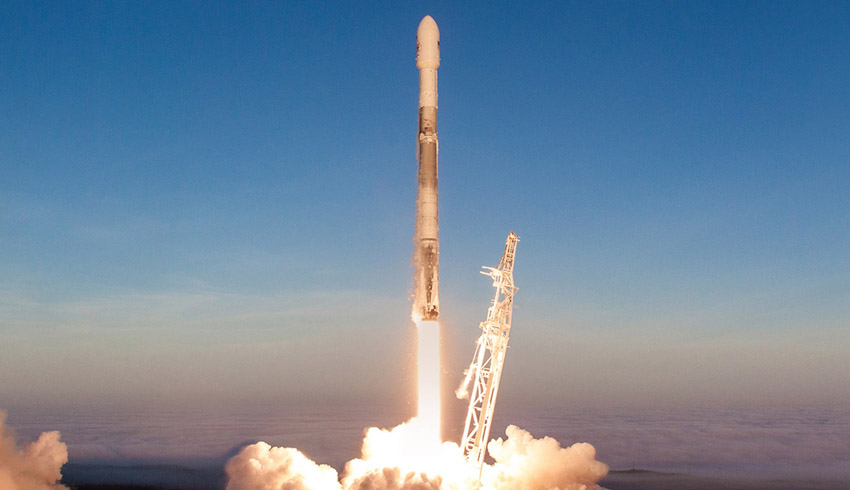
The latest successful test took place Wednesday, 22 April from Launch Complex 39A (LC-39A) at NASA’s Kennedy Space Center in Florida and is the seventh launch of the Starlink communications satellites.
Falcon 9’s first stage previously supported Crew Dragon’s first flight to the International Space Station, launch of the RADARSAT Constellation Mission, and the fourth Starlink mission.
The Starlink satellites are designed to deploy in an elliptical orbit approximately 15 minutes after lift-off.
Prior to orbit raise, SpaceX engineers will conduct data reviews to ensure all Starlink satellites are operating as intended.
Once the checkouts are complete, the satellites will then use their onboard ion thrusters to move into their intended orbits and operational altitude of 550 kilometres.
SpaceX is leveraging its experience in building rockets and spacecraft to deploy the world's most advanced broadband internet system.
With performance that far surpasses that of traditional satellite internet and a global network unbounded by ground infrastructure limitations, Starlink will deliver high speed broadband internet to locations where access has been unreliable, expensive or completely unavailable.
Each Starlink satellite weighs approximately 260 kilograms and features a compact, flat-panel design that minimises volume, allowing for a dense launch stack to take full advantage of Falcon 9’s launch capabilities.
With four powerful phased array and two parabolic antennas on each satellite, an enormous amount of throughput can be placed and redirected in a short time, for an order of magnitude lower cost than traditional satellite-based internet.
Starlink satellites are on the leading edge of on-orbit debris mitigation, meeting or exceeding all regulatory and industry standards.
At end of their life cycle, the satellites will utilise their on-board propulsion system to deorbit over the course of a few months.
In the unlikely event their propulsion system becomes inoperable, the satellites will burn up in Earth’s atmosphere within one to five years, significantly less than the hundreds or thousands of years required at higher altitudes.
Further, Starlink components are designed for full demisability.
Starlink is the name of a satellite network that the private spaceflight company SpaceX is developing to provide low-cost internet to remote locations.
While SpaceX eventually hopes to have as many as 12,000 satellites in this so-called mega-constellation, the size and scale of the project has flustered astronomers and amateur skywatchers, who fear that the bright, orbiting objects will interfere with observations of the universe.
Receive the latest developments and updates on Australia’s space industry direct to your inbox. Subscribe today to Space Connect here.









